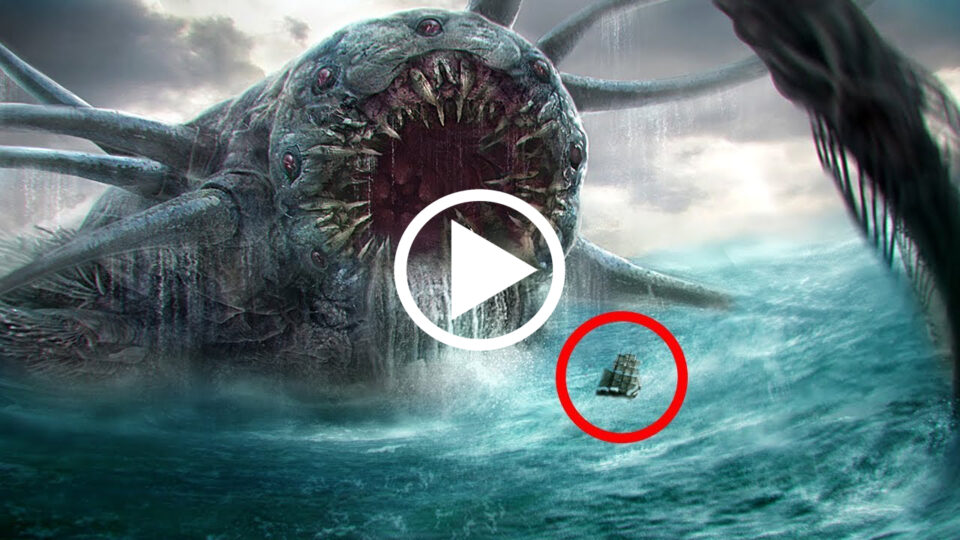Some of my favorite movies of the past include mythical monsters like the Minotaur and the cyclops. But Greek mythology includes a horde of monsters one scarier than the other.
From having multiple heads to turning people into stone, our list of the 15 most terrifying creatures from Greek Mythology will send shivers down your spine. So grab your shield and your sword and get ready to rumble!
15. The Charybdis
Number 15 on our list is the Charybdis. Charybdis was once a beautiful nymph and the daughter of Poseidon and Gaia. She helped her father Poseidon in his feud with her paternal uncle Zeus and helped him engulf lands and islands.
She found out soon enough that you don’t mess around with Zeus and she was cursed and transformed into a hideous bladder of a creature whose face was all mouth and whose arms and legs were flippers.
I have known many women who were all mouth throughout my life, but none like this beauty. I don’t envy her dentist. Anyhow, this princess would swallow vast amounts of water three times a day before belching it out again, creating whirlpools.
Charybdis was very loyal to her father in his endless feud with Zeus; it was she who rode the hungry tides after Poseidon had stirred up a storm, and led them onto the beaches, gobbling up entire villages, submerging fields, drowning forests, claiming them for the sea. She won so much land for her father’s kingdom that Zeus became enraged and changed her into that monster. The myth has Charybdis lying on one side of a blue, narrow channel of water.
On the other side of the strait was Scylla another sea-monster. The two sides of the strait are within an arrow’s range of each other, so close that sailors attempting to avoid Charybdis would pass too close to Scylla and vice versa. The phrase “between Scylla and Charybdis” means being in a state where one is between two dangers and moving away from one will cause you to be in danger of the other.
Scylla
Number 14 on our list is Scylla. The Scylla was Charybdis’s partner in crime. It’s like they called each other up and divided the land between the two of them, so they could enjoy killing as many sailors as possible.
The Scylla lived on the opposite side of the narrow strait and is believed to have been a sea monster with multiple heads that fed on the flesh of sailors who unwittingly traveled too close to the beast’s lair.
The phrase “between a Charybdis and Scylla” now is understood to mean being stuck between two dangerous decisions with no apparent solution. If one traveled closer to the Scylla, to avoid the massive whirlpool of the Charybdis, the ships sailing past Scylla, would be swallowed up by the monster and eaten alive.
Not even the gods could save anyone who approached near the devouring Scylla. There was no point in trying to tackle Scylla, being as she was a ferocious monster impossible to fight against. You were better off just getting past her as quickly as possible.
What a friendly place to navigate in. On one side you have a huge bladder of a monster ready to whirl you in and kill you, and on the other, a beast with many heads ready to make you his next meal. This tag-team would make any WWE tag team blush! The coastal village of “La Scilla” in southern Italy is named after the ferocious beast. Unlike the beast though, “La Scilla” is breathtaking and millions of tourists flock there every year.
The Sphinx
Number 13 on our list is the Sphinx. The Sphinx was a monster said to have the body of a lion, the head of a woman, and the wings of an eagle. Talk about being complex for the rest of your life.
We know her for her treachery and merciless nature, and for her terrifying habit of devouring those who fail to correctly answer her riddles. The Sphinx famously appears in the legend of Oedipus. In the story, Oedipus travels down the road to his kingdom of Thebes but is confronted by this strange and mysterious creature.
The Sphinx reminds me of the high-school bully who would stand in front of a student’s locker, preventing him from getting his books. Blocking Oedipus’ path, the Sphinx confronts him with the following riddle: What is that which in the morning goeth upon four feet; upon two feet in the afternoon; and in the evening, upon three? Oedipus correctly answers the riddle, which is a “man”.
He crawls on all fours as a child, stands on two feet as an adult, and assisted by a cane, he stands on three feet in the twilight of his life. Having been bested at her own game, the Sphinx devours herself in a frustrated rage. How do you devour yourself without dying before you finish your meal?


